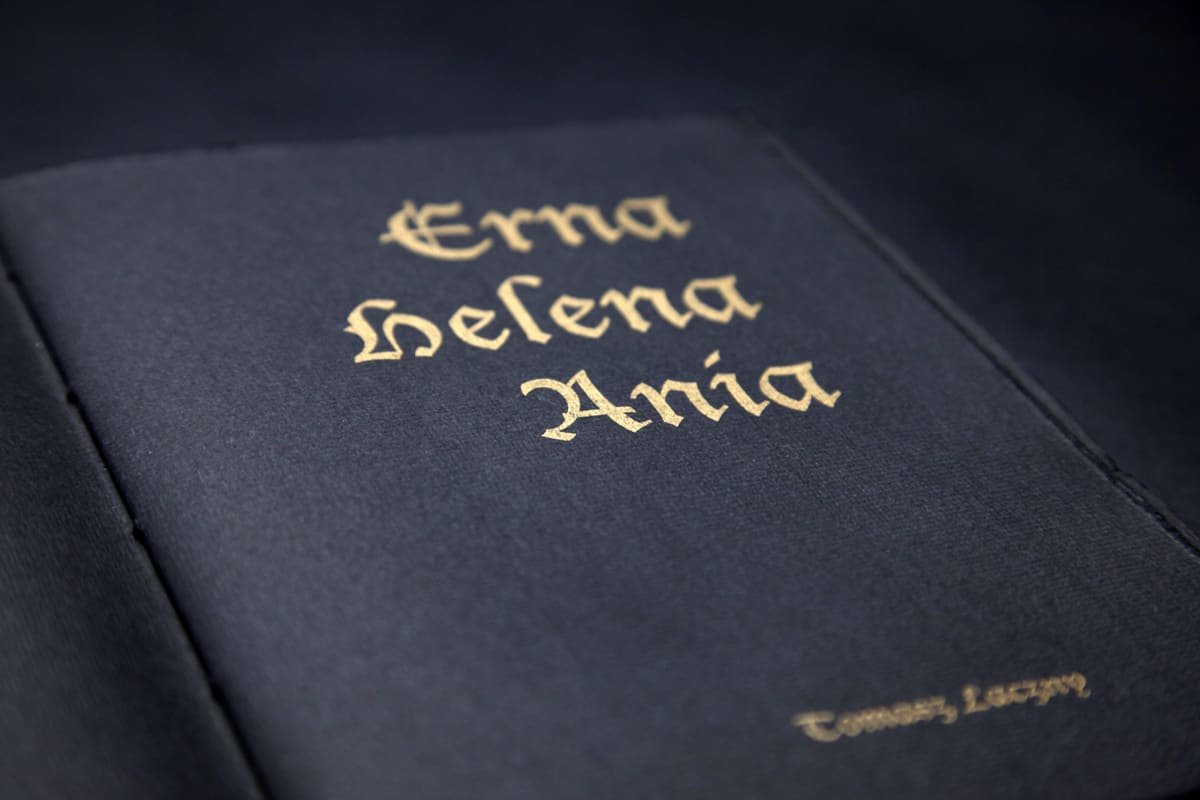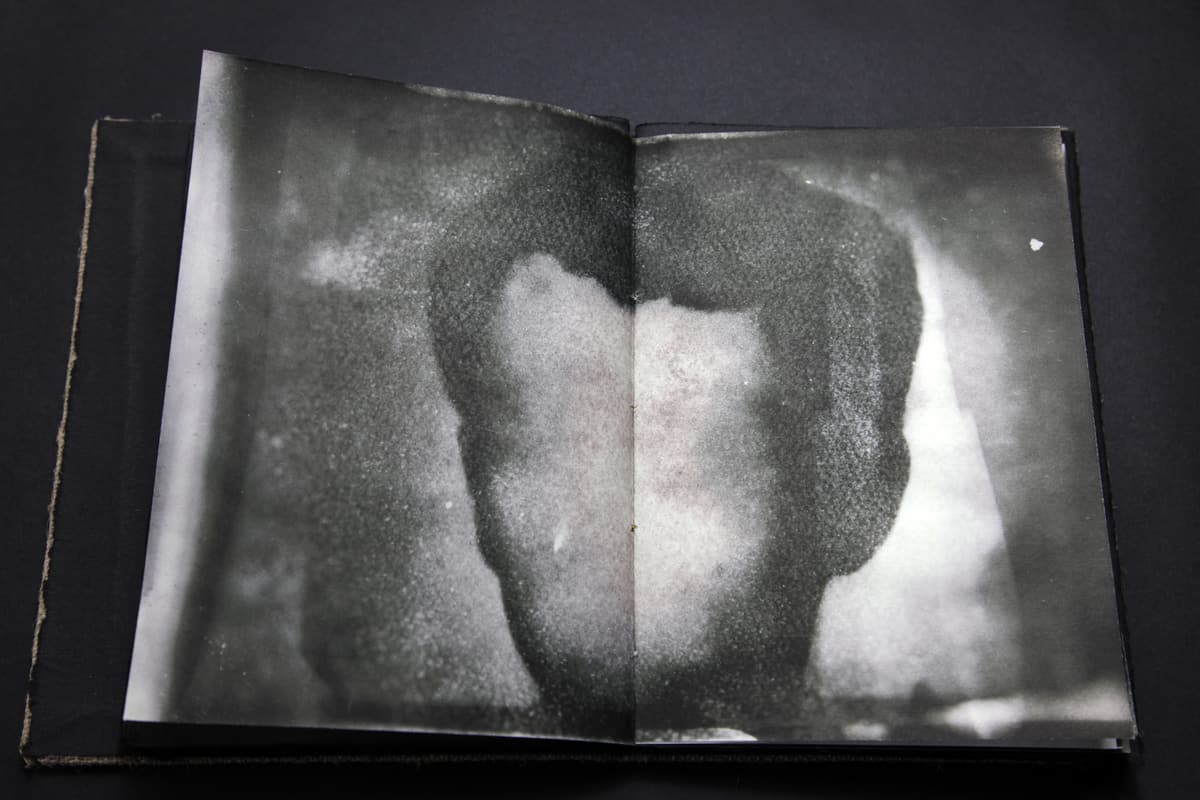Tomasz Łączny is a visual artist, researcher, and educator. In his works, he deals with the issues of identity, memory, and loss. He also addresses these topics in his new artbook Erna Helena Ania, which will be published in April 2021 in a limited edition of 45 copies. The book tells a story of his grandmother – a German woman who fell in love with his Polish grandfather at the end of World War II and about their forbidden love and the issues it carried with it. The narrated story becomes an opportunity for the author to reflect on who we are, if we lose our name, family, and country. The artbook should be project received the BUP book Award.
In the interview, the artist talks about how the final version of the artbook was created, about the message that the book brings, and how the work on the artbook influenced himself.
Tomasz Łączny, photo by Sayuri Ichida
Anna Dziuba: You have been working on this project for ten years. What was the reason for such a long period of work on the artbook? Did the initial idea change during the implementation?
Tomasz Łączny: The initial idea behind the book was to simply capture the story of my grandma: her love of the “enemy”, giving birth to my mum as a consequence of that, her imprisonment and struggle to have contact with her child, her struggle after the war in a country which was earlier occupied by her nation. However, during that research, I found many layers, and it gave me the possibility to ask more universal questions about who we are when we lose our country, family, and even name.
However, at that point, I did not have a clear vision of what kind of medium I wanted to use for this project. I had a lot of material in different forms, like: video and voice recordings, documents, family pictures, my diaries, drawings, and sketches. And I also had a lot of “empty spaces” – things I did not know the story about and was not able to find out anymore because the people who witnessed the events were already gone. In the beginning, I wanted to make a graphic novel as the whole book. At the same time, I wanted the medium to somehow reflect the shattered way of storytelling, a story which on top of that is incomplete. The project was abandoned for a few years, during that time, I went through a difficult personal time (divorce and separation from my children). This however gave me a completely different perspective. I found some similarities between my personal story and the story of my grandmother (living in a foreign country, separation from the child). I also wanted to include this intergeneration experience into the story, the idea of collective memory and events which are passed from one generation to another. I decided to make a book using different mediums and fill in the missing gaps using my own photography (alongside the archival one). The idea was to use photography which suggests, rather than illustrates, to the viewer the possibility of imagining their own version of the story.

A.D.: When did the idea for this project come to you? Was it long before you began working on it, or did the inspiration come from a specific event?
T.Ł.: The idea came around 10-12 years ago when I was obsessively investigating my grandmother’s story (a sad and dramatic love story between my German grandmother and my Polish grandfather during the time of WWII, when this kind of relationship between enemies was prohibited). I discovered this story quite late, when I was in my 20s, but I really started investigating it when I reached my 30s. I think it is the time when we start to look back and ask questions about our heritage.
The project actually started with the illustrations. In my practice, I use both photography and drawing. As I mentioned before, the initial idea was to use a graphic novel, to tell the story of my grandmother. But at some time, I wanted the book to reflect the process of discovery of the story and have “the different medium feeling”. When I was doing my research (interviewing people, historians, reading books, visiting places, taking pictures, etc), I started to think about how we actually preserve the story from one generation to another.
On many occasions during the research, I was told the same story with different details (even my mum at some point told me some fragment of the story contradicting her previous version from a few years ago). I started to think about how our memory works, and how I could capture that. I wanted to mirror this in my book to give the impression of many narrators, who speak about the same thing but have different voices and sometimes contradict each other. It was not my intention to do a documentary, rather I wanted to capture the way the story is told and forms a collective myth at some point at the end.
A.D.: How did your work on the artbook affect you? Did it leave a mark or made you reflect on something?
T.Ł.: During the time I worked on the story, I interviewed many people as well as looked at many images and read a few books about the subject. I started to think about how the story is preserved in our memory, especially when it never was recorded in a written form. I started to think about how stories get distorted because of the way our memory works.
A.D.: You used different materials to create the artbook, even the illustrations in the book are created by using different techniques. Where does this diversity come from?
T.Ł.: I wanted the physicality of the pages (the various materials used) to follow the multi narration used in the book. I am very much interested in creating handmade, art books as it gives me the possibility to make something very unique, even each copy can be different. This uniqueness is key in my practice. For me, photography, drawing, illustration exist fully when it is printed. Seeing the image on the screen of my computer is just a starting point to reinterpreting it and giving it full life in a form of a physical object.
The variety of forms of expression in the book (photographs, illustrations, drawings, comics) is a reflection of my thoughts about storytelling, and how we preserve stories from one generation to another. It also mirrors my fascination with different techniques of storytelling, like using silent graphic novel sections at the beginning of the book, for example, or using collected old family pictures later in the book.

A.D.: Speaking of storytelling, what do you think is the main message of this book? What can the reader learn from it?
T.Ł.: As far as the story of the book, it is very important. Moreover, the book is also a meditation about storytelling, and the way we preserve the stories among generations. It is also a meditation about memory and about forgetting. The idea of the artbook is to give a reader (read viewer) the possibility to create their own version of the story. In that sense, the viewer is a very important part of the project.
I spent over 10 years making this book. It was a long process of deep research and discovery. I learned a lot not only about my family but also about my country, history (the events which are not really discussed in schools, for example one of the biggest forced migrations of humans in world history). I also learned a lot about myself. It changed my perception of the family as a concept and gave me a completely different perspective on how I see my parents and grandparents now. I learned how much history and politics can influence the lives of individuals, how vulnerable we can be in the midst of dramatic historical events. I think it also changed my mum and her relationship to the past. She helped me a lot with researching the history (she even started to interview some people herself). Also, I think that the most important thing for me was the fact that I met my grandma, when she was still young looking for love and was full of dreams about her future life.
AD: The book promises to be extremely interesting. I wish you good luck and thank you for your time.














